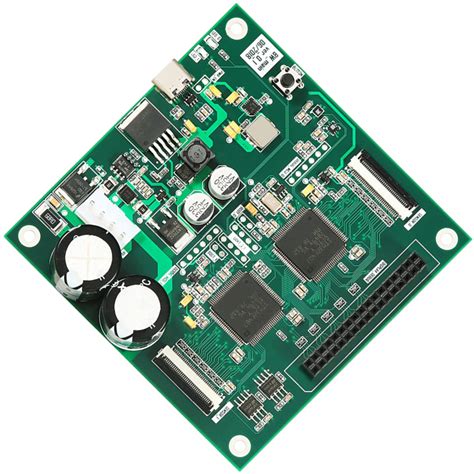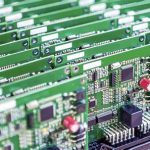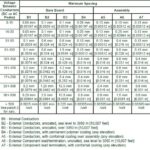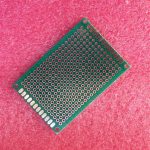Introduction to Turnkey PCB Assembly
Turnkey PCB assembly is a comprehensive solution for businesses and individuals who require high-quality printed circuit boards (PCBs) without the hassle of managing multiple suppliers and processes. This approach involves outsourcing the entire PCB manufacturing process, from design to final assembly, to a single provider. By doing so, clients can benefit from streamlined production, reduced costs, and faster turnaround times.
In this article, we will explore the various aspects of turnkey PCB assembly, including its advantages, the process involved, and how to choose the right provider. We will also discuss how to obtain an instant PCB quote and the factors that influence the cost of turnkey PCB assembly.
Advantages of Turnkey PCB Assembly
Cost Savings
One of the primary benefits of turnkey PCB assembly is cost savings. By outsourcing the entire process to a single provider, clients can avoid the expenses associated with maintaining an in-house manufacturing facility, such as equipment costs, labor, and overhead. Additionally, turnkey PCB assembly providers often have established relationships with component suppliers, allowing them to secure better pricing and pass those savings on to their clients.
Time Efficiency
Turnkey PCB assembly can significantly reduce the time required to bring a product to market. With a single point of contact managing the entire process, clients can avoid the delays and communication breakdowns that often occur when working with multiple suppliers. Moreover, experienced turnkey PCB assembly providers have streamlined processes and advanced manufacturing capabilities, enabling them to deliver high-quality PCBs quickly and efficiently.
Quality Assurance
Reputable turnkey PCB assembly providers adhere to strict quality control standards to ensure that the final product meets or exceeds client expectations. They employ skilled technicians, use state-of-the-art equipment, and follow industry best practices to minimize defects and ensure consistent quality. By entrusting the entire process to a single provider, clients can have peace of mind knowing that their PCBs will be manufactured to the highest standards.
Flexibility and Scalability
Turnkey PCB assembly providers offer a high degree of flexibility and scalability to accommodate clients’ varying needs. Whether a client requires a small prototype run or a large-scale production order, turnkey PCB assembly providers can adapt their processes and capacity accordingly. This flexibility allows businesses to respond quickly to changing market demands and scale their production up or down as needed.
The Turnkey PCB Assembly Process
The turnkey PCB assembly process typically involves the following steps:
-
Design and Engineering: The client provides the PCB design files, and the turnkey PCB assembly provider’s engineering team reviews them for manufacturability and provides feedback or suggestions for improvement.
-
Prototyping: If required, the provider can create a prototype of the PCB to validate the design and functionality before proceeding with full-scale production.
-
Component Sourcing: The turnkey PCB assembly provider sources the necessary components from reliable suppliers, ensuring that they meet the required specifications and are available in sufficient quantities.
-
PCB Fabrication: The provider manufactures the bare PCBs according to the client’s design specifications, using advanced equipment and techniques to ensure high quality and precision.
-
PCB Assembly: The provider assembles the components onto the bare PCBs using automated pick-and-place machines, reflow ovens, and other specialized equipment. This process is carefully monitored to ensure accuracy and consistency.
-
Testing and Quality Control: The assembled PCBs undergo rigorous testing and quality control procedures to verify their functionality and reliability. This may include automated optical inspection (AOI), in-circuit testing (ICT), and functional testing.
-
Packaging and Shipping: Once the PCBs have passed all quality checks, they are packaged securely and shipped to the client according to their specified delivery requirements.

Choosing the Right Turnkey PCB Assembly Provider
When selecting a turnkey PCB assembly provider, consider the following factors:
-
Experience and Expertise: Look for a provider with a proven track record of successfully delivering high-quality PCBs across various industries and applications.
-
Manufacturing Capabilities: Ensure that the provider has the necessary equipment, facilities, and processes in place to handle your specific PCB requirements, such as multi-layer boards, fine-pitch components, or advanced surface finishes.
-
Quality Standards: Verify that the provider adheres to recognized quality standards, such as ISO 9001, IPC-A-610, and IPC-J-STD-001, to ensure consistent and reliable results.
-
Customer Support: Choose a provider that offers responsive and knowledgeable customer support, with clear communication channels and a commitment to addressing your needs and concerns promptly.
-
Pricing and Lead Times: Compare pricing and lead times from multiple providers to ensure that you are getting a competitive offer that meets your budget and timeline requirements.
Getting an Instant PCB Quote
Many turnkey PCB assembly providers offer online tools that allow clients to obtain an instant PCB quote by providing basic information about their project. To get an accurate quote, you will typically need to provide the following details:
- PCB dimensions and layer count
- Material type and thickness
- Surface finish
- Quantity required
- Component types and quantities
- Desired lead time
Based on this information, the provider’s quoting system will generate an instant estimate for the cost of your turnkey PCB assembly project. Some providers may also offer additional services, such as design review or component sourcing, which can be included in the quote upon request.
Factors Affecting Turnkey PCB Assembly Cost
Several factors can influence the cost of turnkey PCB assembly, including:
-
PCB Complexity: More complex PCBs with higher layer counts, smaller feature sizes, or advanced materials will generally be more expensive to manufacture.
-
Component Costs: The cost of the components used in the PCB assembly can vary widely depending on factors such as type, quantity, and availability.
-
Order Quantity: Larger order quantities often result in lower per-unit costs due to economies of scale and reduced setup times.
-
Lead Time: Faster turnaround times may incur additional costs due to the need for expedited processing and shipping.
-
Additional Services: Value-added services, such as design support, testing, or special packaging, can increase the overall cost of the turnkey PCB assembly project.
Conclusion
Turnkey PCB assembly offers a comprehensive and efficient solution for businesses and individuals seeking high-quality PCBs without the hassle of managing multiple suppliers and processes. By outsourcing the entire PCB manufacturing process to a single provider, clients can benefit from cost savings, faster turnaround times, and consistent quality.
When choosing a turnkey PCB assembly provider, it is essential to consider factors such as experience, manufacturing capabilities, quality standards, customer support, and pricing. By obtaining an instant PCB quote and understanding the factors that influence cost, clients can make informed decisions and ensure the success of their PCB projects.
Frequently Asked Questions (FAQ)
-
What is the minimum order quantity (MOQ) for turnkey PCB assembly?
The minimum order quantity for turnkey PCB assembly varies between providers. Some providers may offer low MOQs for prototype runs, while others may require higher quantities for full-scale production. It is best to check with individual providers to determine their specific MOQ requirements. -
How long does the turnkey PCB assembly process typically take?
The lead time for turnkey PCB assembly depends on various factors, such as the complexity of the PCB, the availability of components, and the order quantity. In general, prototype runs can be completed within a few days to a week, while larger production orders may take several weeks. Many providers offer expedited services for clients with urgent needs. -
Can I provide my own components for turnkey PCB assembly?
Yes, most turnkey PCB assembly providers allow clients to supply their own components (known as consigned components) for the assembly process. However, it is essential to ensure that the components meet the required specifications and are available in sufficient quantities. Some providers may also offer component sourcing services to help clients procure hard-to-find or custom components. -
What files do I need to provide for turnkey PCB assembly?
To begin the turnkey PCB assembly process, you will typically need to provide the following files: - Gerber files for the PCB layout
- Bill of Materials (BOM) listing all components and their quantities
- Assembly drawings or pick-and-place files showing component placement
-
Any additional design files, such as schematics or 3D models, if available
-
How can I ensure the quality of my turnkey PCB assembly project?
To ensure the quality of your turnkey PCB assembly project, choose a provider with a proven track record of quality and reliability. Look for providers that adhere to recognized quality standards, such as ISO 9001, IPC-A-610, and IPC-J-STD-001. Additionally, communicate your quality requirements clearly with your provider and request regular updates and quality reports throughout the manufacturing process.
| Factor | Impact on Turnkey PCB Assembly Cost |
|---|---|
| PCB Complexity | Higher complexity increases cost |
| Component Costs | Component prices affect overall cost |
| Order Quantity | Larger quantities reduce per-unit cost |
| Lead Time | Faster turnaround may increase cost |
| Additional Services | Value-added services can increase cost |
By understanding the factors that influence turnkey PCB assembly cost and working closely with a reputable provider, clients can ensure the success of their PCB projects while maintaining cost-effectiveness and quality.






Leave a Reply